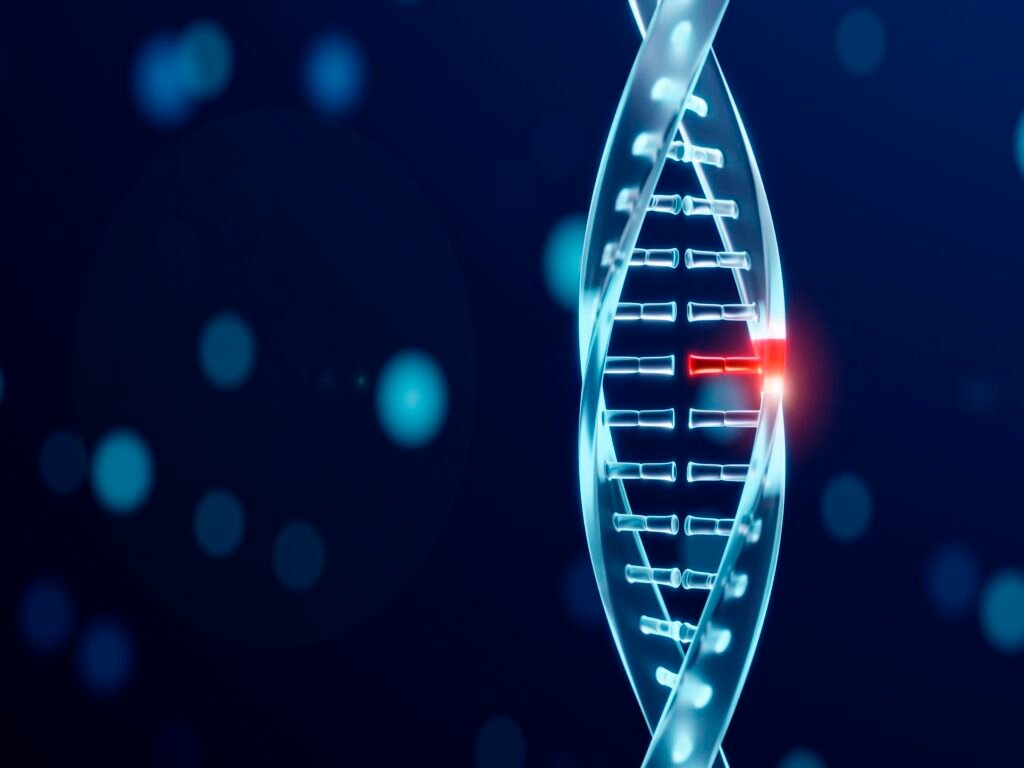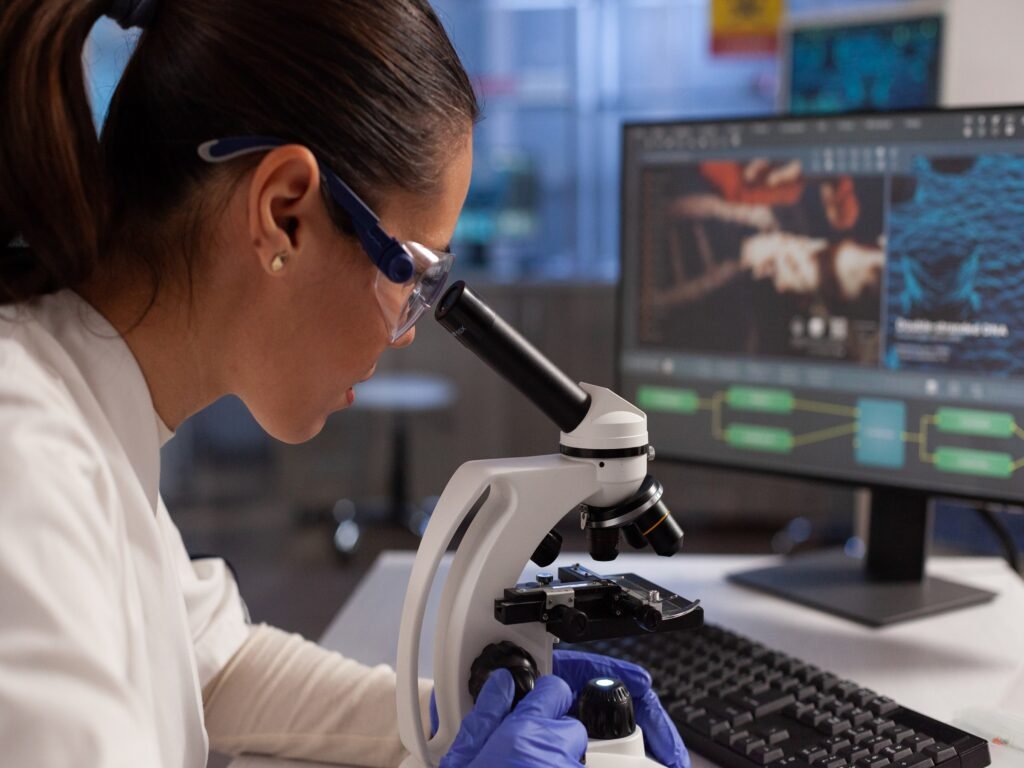Revolutionizing Aging: The Promise of Stem Cell Therapies and Gene Editing

What if you could live your golden, youthful age in vitality and health rather than in frailty and disease? With tools like stem cell therapies and gene editing, reversing age is a possibility.
Improving lifespans is one of the most researched and talked-about topics in the scientific community. Have you ever imagined what stem cell therapy and gene editing can deliver to this world if unlocked to their full potential?
Aging is an inevitable part of life. As the global population increases, the World Health Organization predicts that by the year 2050, the total population of people aged 60 and above will double to about 2.1 billion. This number will put pressure on healthcare systems, economies, and even societies. Gene editing and stem cell therapies emerge as transformative forces with the promise of reinventing the way we age. Let us read further to dive deep into this discussion.
Understanding Aging And The Challenges Associated
The complex biological process of aging affects every element of our body, ranging from cells to organs. With aging, the cell’s ability to divide and grow lessens and gradually gets lost. There are various biological, environmental, social, physiological and behavioral changes that one faces as the years pass.
The human body is built of various kinds of tissues. Some cells, such as those in our skin, are constantly replaced because they do not live for a long time. When we age, the replacement of these cells becomes slower. But cells like for example those in the nerves are not replaced as they do not divide. The affected organ will suffer a decreased efficiency with time, showcasing signs of aging.
Aging refers to the damage that cells suffer due to environmental stressors and metabolic processes, leading to decreased functionality. This cellular decline is manifested in several ways, such as the thinning of the skin, reduction in the efficiency of the heart and lungs, and weakening of the bones.
There are also some common age-related diseases like Alzheimer’s, cardiovascular disease and arthritis that not only affect individuals quality of life but also place an enormous burden on healthcare systems. Gene editing and stem cell therapies offer a solution for this.


Stem Cell Therapies - A Game-Changer With Unlimited Potential
Stem cells refer to the special cells in human beings with the ability to propagate and develop into many different types of cells, ranging from muscle cells to brain cells. The two different types of stem cells, known as Pluripotent and Multipotent, hold the potential to reverse aging.
Some studies conducted by scientists have shown that stem cell therapies have a vast application in the field of regenerative medicine. With their inherent biological characteristics, such as self-renewal and plasticity, stem cells can delay and even reverse aging.
Today, stem cell therapies are in use to treat conditions such as leukemia through bone marrow transplants. There are also ongoing trials for their use in regenerating heart tissue after a heart attack. Recent research and clinical trials suggest that stem cell therapies could potentially reverse age-related damage by rejuvenating aged tissues and organs.
Gene Editing - Genetic Modification To Reverse Aging
Gene editing is a promising leap in biomedical science that allows precise modifications to an organism’s DNA. CRISPR-Cas9 is the most significant technique in this field. When it comes to aging, gene editing holds an immense potential to target genetic mutations that accumulate with time and affect cellular function.
Research is already exploring how gene editing might prevent age-related diseases such as cancer by eliminating mutations that drive uncontrolled cell growth. In addition, modifying genes that are associated with cardiovascular health could drastically reduce the incidence of heart disease in the elderly. These advancements could not only extend lifespan but also significantly improve the quality of life in our later years.
Ethical Landscape Related To Stem Cell Therapies and Gene Editing
Stem cell therapy and gene editing are of immense caliber in treating issues like Parkinson’s disease and spinal cord injuries. However, like any emerging field, stem cell therapy and gene editing have ethical considerations, which raise significant concerns in society.
One of the current ethical considerations regarding stem cell therapy is the unlimited differentiation potential that Induced pluripotent stem cells (iPSCs) hold. This potential can be used in human cloning and can be a risk for human-animal chimeras and human embryos. These ethical questions are about maintaining a balance between the medical benefits and even respecting the embryonic life.
Ethical implications related to gene editing include safety, informed consent, and genome editing. Sometimes, there is also the possibility of off-target effects and the passing of genetic modifications to future generations. These concerns raise some ethical questions that require immediate attention by the field’s contributors.
The case involving WARF's patent on embryonic stem cell technology
Wisconsin Alumni Research Foundation (WARF) filed a patent EP1040185 covering methods for isolation, culture, and use of primate cells, including human, embryonic stem cells. This highlights the complex interplay between scientific innovation and ethical considerations. The European Court of Justice’s decision to broadly define “human embryo” and exclude methods involving their destruction from patentability underscores a commitment to protecting human dignity and integrity.
While this ruling limits the commercial exploitation and consequently the investments in such research within the EU, it does not inhibit the continuation of stem cell research itself. Instead, it encourages the development of ethical research practices and the exploration of alternative stem cell sources. The case serves as a precedent for balancing ethical standards with scientific progress, ensuring that advancements in biotechnology are pursued responsibly and with respect for fundamental human values. This decision has far-reaching implications, potentially influencing global patent laws and research practices in the field of biotechnology.
Future Prospects In Concerns With Gene Editing And Stem Cell Therapy
Both stem cell therapy and gene editing hold immense scopes for the future. Continuous development and evolution are bringing both these fields into the limelight as beacons of hope in dealing with ailments that were thought to be incurable. According to scientific journals, the combination of stem cell therapy and gene editing makes fixing genetic flaws and treating hereditary disorders possible. In addition, fields like regenerative medicine, tissue engineering, and even generating artificial organs and body parts are looking at rising to a new level.
Wrapping Up
Both stem cell therapies and gene editing are pioneer fields in medical science, delivering amazing possibilities and tackling the challenges of aging and age related diseases. The current dynamics show us that it is not just limited to enhancing the human lifespan but also improving the quality of life.
The future of both these medical breakthroughs lies in striking a perfect balance between boosting constant innovation and upholding ethical integrity. These advancements will change the way we age forever only when we are able to achieve this balance and embrace these fields. We human beings have continuously evolved to make our lives better. With these technologies, the way we age will change, taking humanity to the next pinnacle of longevity and growth.

